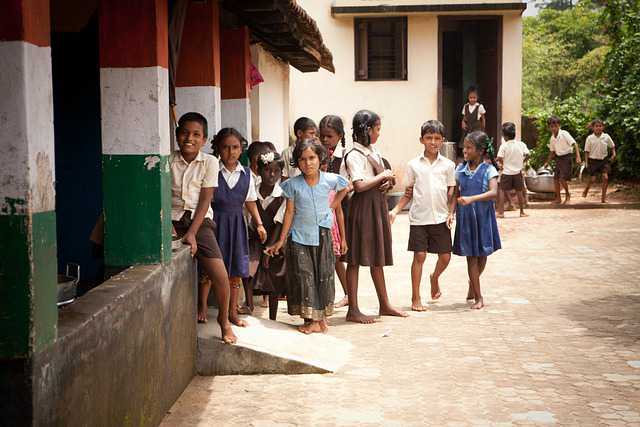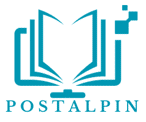Indian government schemes on education aim to educate the people of the country. Education, as we know, is essential for the overall development of a country, be it economic, political, or transforming a country in any field.
People with good education play an important role in developing a country. Well-educated people of a country are an essential asset for that country. In this modern era, you need well-educated people to lead in any sector.
India is a big country. As per census of 2011 Indian population is 1,21,08,54,977. The Indian government has always prioritized education and started several government schemes to educate the people.

Table of Contents
Government Education Schemes in India 2022
India’s education system is getting better over time, and with this system, students of the country are getting a better education right from the primary level.
The government also organizes periodic teaching programs for teachers to teach them a modern method of teaching so that they can provide quality education to the students.
Below are 5 government schemes on education to educate children from all sections of society and make them well-educated and skillful.
Sarva Shiksha Abhiyan (SSA)
Ministry of Human Resources and Development, Government of India, governs the Sarva Shiksha Abhiyan. SSA was introduced in 2001 and is the biggest project to educate the country’s children.
Sarva Shiksha Abhiyan is one of the government schemes on education in India to provide universal elementary education to country children between 6 to 14 years of age.
Under the SSA government opened new primary schools, constructed school buildings, up-grade existing schools, and provided additional classrooms.
This education scheme also covers the maintenance of schools, drinking water, toilet facilities, and teaching learning material (TLM).
In districts, the SSA head is the district project coordinator (DPCs). The district project coordinator coordinates with Block Resource Centres (BRCs) and Cluster Resource Centres (CRCs). Block or cluster level work is managed by the Block Educational Officer (BEO).
SSA is run by the central, state, and UT governments. Fund approval for SSA is Program Approval Board (PAB) plan based and is as per the committee’s recommendations framed by state and national mission.
Midday Meal Scheme (MDM)
In 1995 government of India launched the National Programme of Nutritional Support to Primary Education. This scheme is commonly known as the midday meal scheme.
The primary goal of the scheme is to provide midday meals to school-going children to get rid of hunger during classes, encourage backward class and poor children to admit to the schools, and increase the number of school-going children.
This scheme is helpful for school children because the school provides midday meals; they do not need to worry about the midday meals that help them concentrate on their studies and attend classes regularly.
The scheme is also significant in the context that it addresses the food security issue and lack of nutrition. The nutritional level is a considerable concern 40% of children in India are undernourished; the midday meal scheme addresses this nutritional issue among children.
In the midday meal scheme, the central government provides food grains, transport, management, and assistance to construct school kitchens to prepare the midday meal.
Under this scheme, 11.80 crore children in 11.20 lakh schools are studying throughout the country. Store food gains safely and prepares hygienic meals for students 8.45 lakh kitchen-cum stores are constructed all over the country.
Also Read: Pre Matric Scholarship Scheme for Minorities
Right to Education (RTE)
The right to education (RET) is a fundamental right of every child in India from 6 to 14 years old. Article 21-A added in the constitution of India by 86 Amendment Act 2002 assures the free education right to every child between 6 to 14 of age.
This act has had an effect since April 01, 2010, and the act sets basic standards, and every primary school in India must follow that standard. Right to education act ensures that no student up to primary level has to pay any fee or charges to complete his primary education.
Also, the RET act aims to develop a curriculum that helps a child’s overall development and increases knowledge, potential, and talent.
According to RET act, it is obligatory for private schools to reserve a 25% quota for economically weaker families’ children.
The act ensures the recruitment of teachers with appropriate qualifications. RET also does not allow corporal punishment, mental abuse, selecting a child on a screening bases, fees or any other cost, or private tutoring by teachers. The act also does not allow schools to operate without recognition.
Kasturba Gandhi Balika Vidyalaya (KGBV)
Among government schemes on education, Kasturba Gandhi Balika Vidyalaya (KGBV) aims to provide minority community girls, especially those belonging to SC, ST, and OBC, quality education by establishing boarding schools at the upper primary level.
The government of India started the KGBV scheme in August 2004. The country’s educationally backward blocks (EBBs) are covered under this scheme, where rural women’s literacy rate is below the national average.
Under the KGBV scheme, schedule cast (SC), Schedule Tribe (ST), and Other Backward Categories (OBCs) or minority communities are provided with 75 percent reservation, and a 25 percent quota is given to girls belonging to below the poverty Line (BPL) families.
Although the state/district level ministry of education is the nodal agency for KGBV, there is considerable variation in managing the Kasturba Gandhi Balika Vidyalaya within and between states. Various agencies and governmental and non-governmental organizations participate in the management of KGBV.
Infrastructure Development in Minority Institutes (IDMI)
IDMI is one of the government schemes on education in India, launched to improve the quality of education by improving the infrastructure of minority schools.
The main goal of this scheme is to enhance facilities in minority schools that help educate children from minority communities.
IDMI scheme applies all over the country, but the places where the population of a minority is more than 20% are a priority. Also, the scheme supports educational opportunities for children having special needs, girls, and others who are most marginalized in society.
Institutions (trust running, society running, voluntary organizations, government schools) recognized central, or State schools can apply for assistance under the scheme.
Under the IDMI scheme, voluntary organizations that are existed for at least three years are considered for assistance.
Conclusion
One of the priority sectors before the government of India is the education sector. Several schemes were started to improve the education sector and provide the country’s children with quality education.
Indian government started the above-mentioned government schemes on education to provide free and quality education for all community children throughout the country.
To achieve the goal of free and quality education for the country’s children government spends corers of rupees every year.


